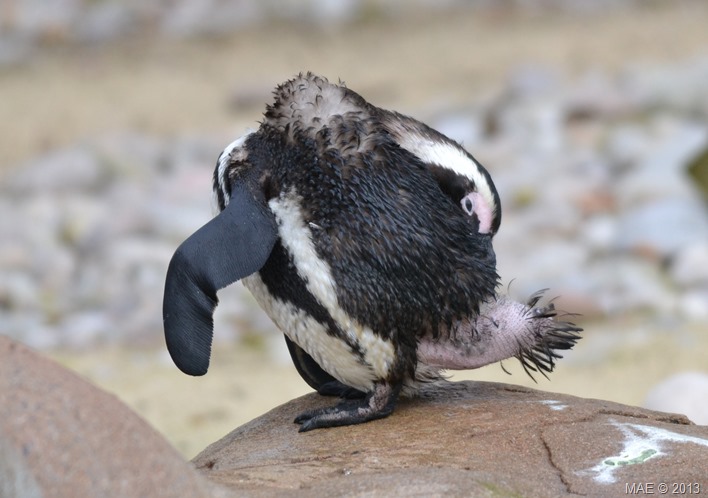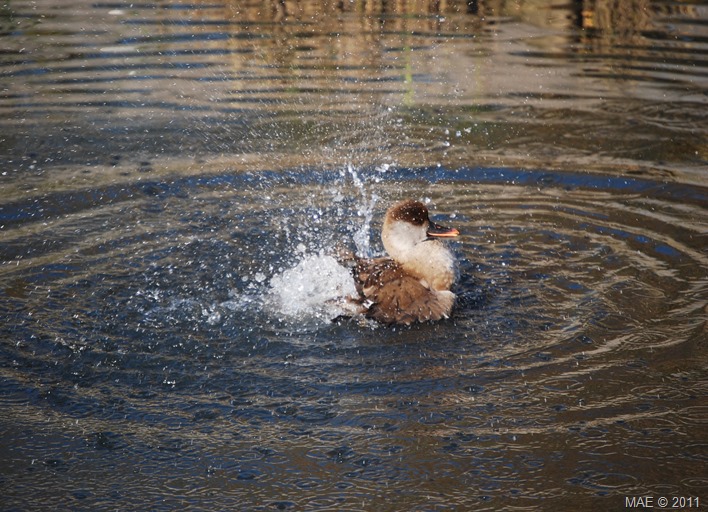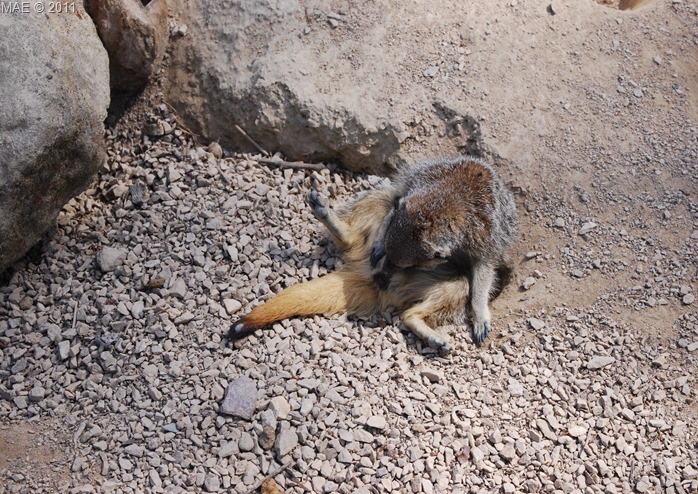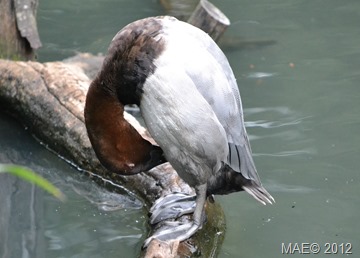 Every morning, we start the day by taking a shower, brushing our teeth and if necessary shaving or combing our hair. We normally have two hands with normally five fingers each, so there is not an awful lot of difficulty in that activity.
Every morning, we start the day by taking a shower, brushing our teeth and if necessary shaving or combing our hair. We normally have two hands with normally five fingers each, so there is not an awful lot of difficulty in that activity.
If you are a male Pochard however, you have to find other ways to do the business. Balancing on a piece of wood with only your bill to make some effort is not for the faint-hearted.
Standing save ashore, when you don’t h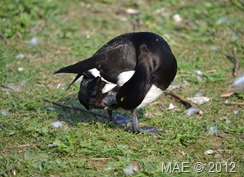 ave to do the balancing act as this Tufted Duck is showing looks already much easier. But still the restriction of only a bill to take care of things is rather limiting.
ave to do the balancing act as this Tufted Duck is showing looks already much easier. But still the restriction of only a bill to take care of things is rather limiting.
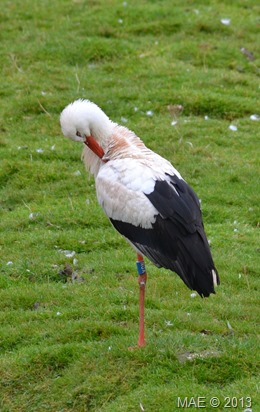 There is always a graceful exception to the rule: this Stork is able to balance on just one leg and still groom itself perfectly.
There is always a graceful exception to the rule: this Stork is able to balance on just one leg and still groom itself perfectly.
In this blog I will show various methods of ablution of various animals with only one purpose: to do your best to look the part.
I will show you a Black-footed Penguin, a bathing Red-crested Pochard, a Meerkat with a lot of sand to clear out of it’s fur and two Black-capped Squirrel Monkeys helping each other. Especially the mammals, like myself, have a huge advantage with their arms and claws.
No matter what method they use, cleverly or just out of necessity, I am very pleased that all animals (except perhaps for pigs) take some time to clean, groom and polish them for my pictures. Which gives me the opportunity to show off on their behalf.
